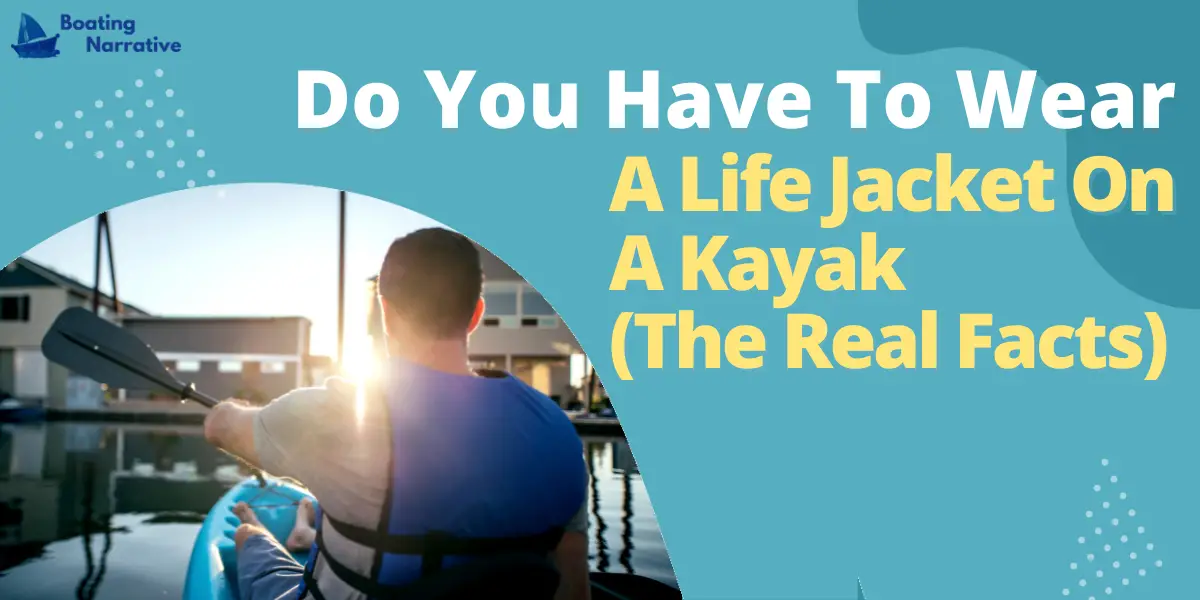Many people have a love affair with kayaking. There’s a high chance you’ve considered kayaking, whether you’re a novice or a seasoned kayaker.
Kayaking is a fun, challenging way to spend your time. It’s a great way to burn calories, enjoy nature, and get a workout. But you won’t be able to enjoy the sport if you don’t use a safety device.
In this article, we’re going to talk about life jackets. If you’re planning on going kayaking, you should know about the different types of life jackets available.
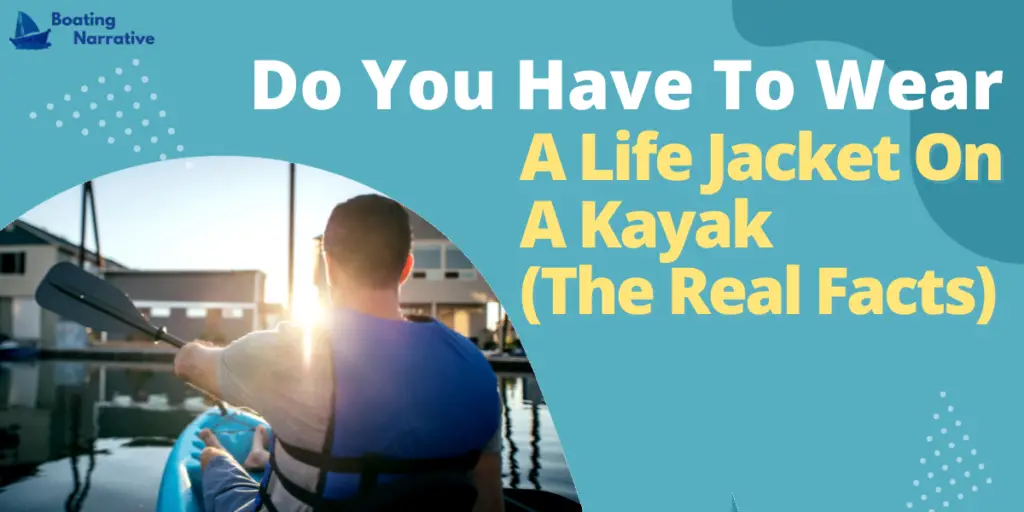
Here’s The Answer To Do You Have To Wear A Life Jacket On A Kayak:
Yes, you are required to wear a life jacket when on a kayak. Most kayak rental companies provide life jackets to customers at no additional charge. If you’re using your own kayak, make sure to carry a life jacket too.
A life jacket can help if you are knocked out of your kayak. It will float and keep you afloat while you recover. Life jackets are a must for whitewater kayaking. You should always put one on before entering the water, no matter what type of kayaking you do.
Marine Laws Say About Life Jackets on Kayak

There are different boating laws in different states, but generally speaking, you are required to wear a life jacket when kayaking. All kayakers are required by the United States Coast Guard (U.S.C.G.) to wear a wearable and serviceable personal flotation device (P.F.D.) that has been certified by the U.S.C.G.
The P.F.D. Must be of the correct size for the intended wearer and in good condition. Here are some things to consider:
- The United States Coast Guard (U.S.C.G.) requires that all boaters have a wearable and serviceable life jacket on board their vessel.
- The U.S.C.G. also requires that children under the age of 13 must wear an approved life jacket while on a canoe, kayak, or other vessels.
- Some states have additional laws that require all boaters to wear a life jacket. For example, in New York, all vessel operators and passengers must wear a life jacket from November 1 through May 1.
- Life jackets come in different sizes and types. Make sure you get a life jacket that fits you properly and is intended for the type of boating you will be doing.
Reasons Kayakers Wear Life Jackets
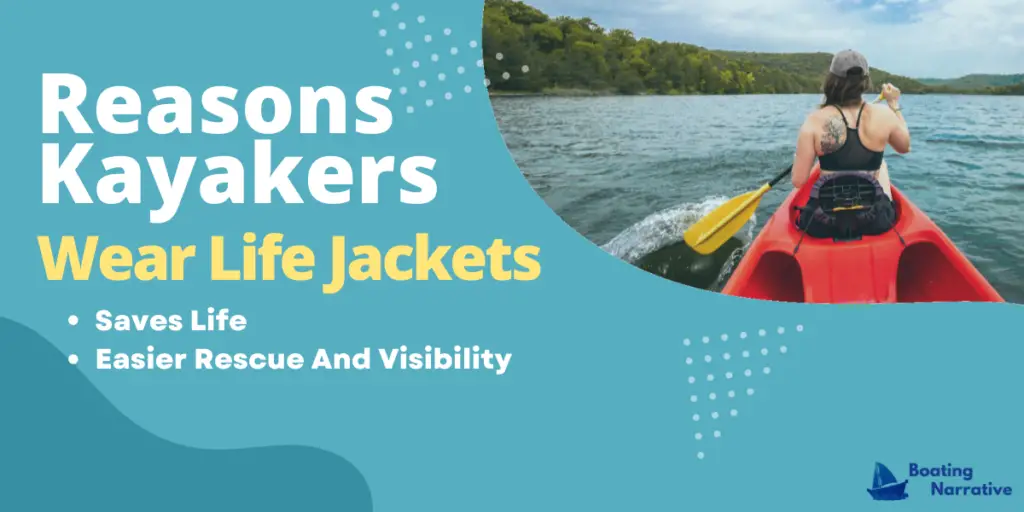
Saves Life
Life jackets save lives. According to U.S. Coast Guard reports, wearing a life jacket reduces the risk of drowning by about 80%. If you are paddling on open water, it’s also a good idea to have a float plan.
That way, if something happens and you become separated from your kayak, someone will know where to find you. So, remember, always wear a life jacket when paddling on a waterway. It could save your life.
Easier Rescue And Visibility
As a paddler, you know how important it is to have the proper size life jacket. But did you know that wearing a jacket also makes it easier for rescuers to find you? The jacket’s buoyancy keeps you afloat and makes you more visible in the water.
In addition, if you are involved in a collision, the jacket will help protect you from injuries. Paddling in an area where there is a risk of collision, always wear a life jacket. In addition, always carry a throwable device, such as a life ring or a flare, in case you need to signal for help.
And finally, don’t forget to strap your paddle to your life jacket! This way, if you do end up in the water, you won’t have to worry about losing your paddle.
Remember, wearing a life jacket is not just about your own safety. It’s also about making it easier for rescuers to find you if something goes wrong. So always wear a life jacket when paddling!
What Is the Right Life Jacket for Kayaking?
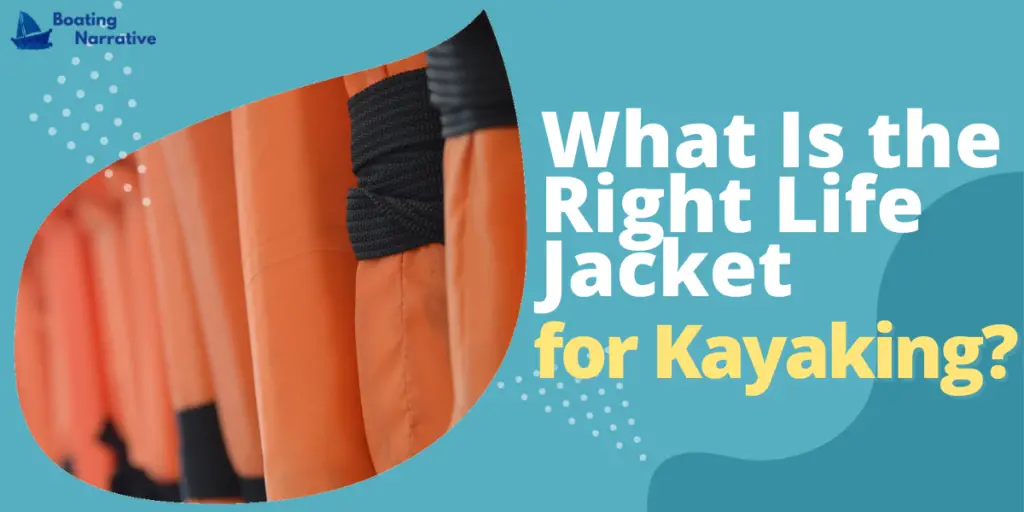
There are many different types of life jackets on the market, and it is important to choose one that is comfortable and fits well. Look for a life jacket with larger armholes and a full range of arm movement for paddling.
The straps should be adjustable so that the life jacket can be a snug fit and up close to the body. Here are some tips for choosing the right life jacket:
- Make sure the life jacket fits properly. It should allow you to move around easily and be snug yet not too tight.
- Choose a life jacket that is comfortable to wear. It shouldn’t be overly bulky or constricting because you’ll be wearing it for several hours.
- Consider the climate and conditions you will be kayaking in. If you are kayaking in cold water, choose a life jacket that has a built-in hood or is made of insulating material.
- Make sure the life jacket has the proper U.S.C.G. approval rating for the type of kayaking you will be doing.
Is It Harmful to Use a Life Jacket?
As a general rule, yes, there is some risk in using a life jacket. In a few situations, they can even kill you. The straps on life jackets can get caught on things and strangle you.
If you tumble into the water while wearing a life jacket, the jacket may fill with water and drag you down. But in most situations, life jackets save lives.
“Wearing a life jacket raises your chances of surviving in the water significantly,” said Petty Officer 1st Class Crystalynn Kneen. “To survive, you don’t need to be a strong swimmer. Life jackets work for everyone.”
Why Do Kayakers Not Wear Lifejackets?
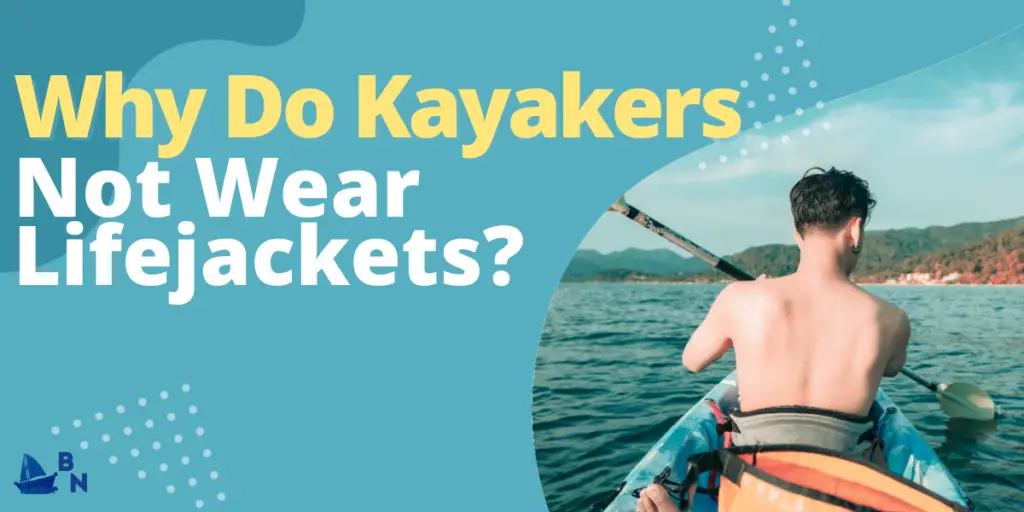
Some kayakers choose not to wear life jackets because they are uncomfortable or they think they are a good swimmer. However, it is always best to wear a life jacket to be safe.
There are a few reasons why kayakers might not wear life jackets, even though it is technically required by law in some states. One reason is that personal watercraft (PWC) like kayaks are designed to be inherently stable, so beginners are not likely to tip over.
Kayakers also tend to paddle in relatively calm water conditions, so the risk of drowning is low. And finally, many kayaks have enclosed cabins that provide additional protection from the elements.
How Do Kayak Life Jackets Work?
Kayak life jackets are designed to provide flotation and support for the head and neck in the event of a kayaking accident. They are typically made from buoyant materials such as foam or kapok, and they may also have a variety of straps and other features to keep the wearer safe and comfortable.
- They typically have two main parts: a body and head support.
- The body of the life jacket provides flotation and support for the torso, while the head support helps keep the head and neck above water.
- Many kayak life jackets also have a variety of straps and other features, Adjustable straps, for example, ensure a secure and comfortable fit.
Should You Wear A Life Jacket
Most states have laws requiring people of certain ages to wear life jackets while kayaking, canoeing, or paddleboarding. Some states also have specific requirements for life jackets on sailboats.
Law enforcement officers may issue citations to people who violate these laws. One of the most critical safety precautions is to wear a life jacket you can take while kayaking, canoeing, or paddleboarding.
Life jackets provide flotation and help keep your head above water if you capsize or fall out of your boat. Wearing a life jacket can also help prevent hypothermia, a condition caused by exposure to cold water.
If you are required to wear a life jacket while kayaking, canoeing, or paddleboarding, make sure it is in serviceable condition and fits properly. You can find more information about choosing the right life jacket at the U.S.U.S. Coast Guard’s Boating Safety website.
If Not, What Should You Wear Instead?
Most kayakers choose to wear a life jacket while paddling. Life jackets provide flotation and help keep kayakers safe in the event of a capsize or other emergencies. However, some kayakers choose not to wear a life jacket.
If you decide not to wear a life jacket, there are a few things you can do to stay safe on the water.
- Wear a wet suit or drysuit
- Take a kayaking safety course
- Paddle with a partner
Kayak Life Jacket vs. Waterproof Paddling Suit
For kayakers, there are two basic forms of flotation devices: the life jacket and the waterproof paddling suit. Both offer advantages and disadvantages, but it is ultimately up to the person to decide which is best for them.
The most prevalent sort of flotation gear is a life jacket. It is usually made of foam and is designed to keep the wearer’s head above water. The biggest advantage of the life jacket is that it is very comfortable to wear and does not restrict movement. The downside is that it can be bulky and uncomfortable in warm weather.
The waterproof paddling suit is another option for kayakers. It is made of waterproof material and is designed to keep the wearer dry. The biggest advantage of the waterproof paddling suit is that it is very lightweight and does not restrict movement. The downside is that it can be uncomfortable in warm weather and does not provide as much flotation as a life jacket.
Is It Illegal to Not Wear a Life Jacket on a Kayak?
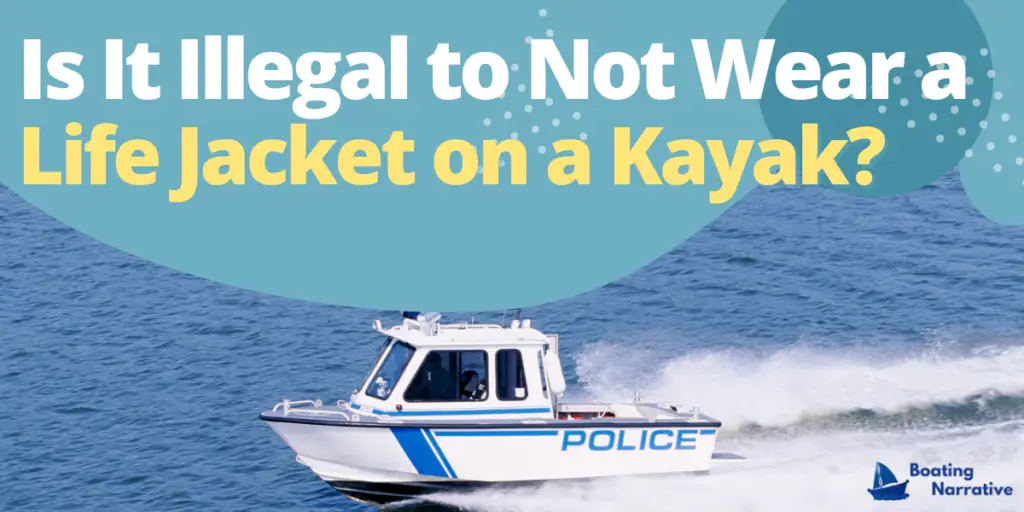
Life jacket laws vary from state to state. In some states, everyone in a kayak must wear a life jacket, regardless of their age or experience level.
In other states, only children under a certain age are required to wear a life jacket. It is always a good idea to check the life jacket laws in your state before you go kayaking.
- In the United States, there is no federal law that requires kayakers to wear life jackets while on the water.
- However, many states have their own laws that do require kayakers to wear life jackets.
- For example, in the state of California, all kayakers must wear a life jacket while on the water.
- In general, it is always a good idea to wear a life jacket while kayaking, even if it is not required by law.
Cost of Kayak Life Jacket
That depends on the type of life jacket you choose. Traditional life jackets are usually the least expensive option, starting at around $30. These jackets are made of foam and are designed to keep your head above water if you fall in.
Inflatable life jackets are more expensive, starting at around $100. These jackets have inflating devices and are filled with air once deployed and can provide more buoyancy than foam jackets. They are also more comfortable to wear in warm weather since they don’t trap as much body heat.
What Do Kayakers Say About Life Jackets?
Some kayakers say that life jackets are essential safety equipment and that everyone should wear one. Others say that life jackets are a personal choice and that it depends on the situation. There are pros and cons to both sides of the argument.
Some kayakers say that life jackets are not necessary when kayaking because they are experienced and know how to swim. Others say that life jackets are essential in case of an emergency, such as if the kayak capsizes. Some kayakers also say that life jackets can be uncomfortable and limit their movement.
Final Thoughts
- Wearing a life jacket is always a good idea when kayaking.
- The U.S.U.S. Coast Guard does not issue fines to kayakers with no life jacket, but it is a good idea to wear one.
- Today’s life jackets are much more comfortable than those of years past.
- Some states have laws requiring children to wear life jackets while kayaking.

